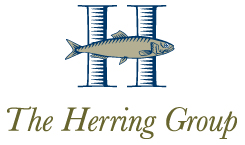This article originally appeared on LandscapeManagement.net on November 3rd, 2023. Greg Herring regularly writes for Landscape Management, providing financial analysis and insights tailored to landscape business owners.
Managed exits, centers of excellence, wallet share, working capital management.
What do those phrases mean? They mean that BrightView Holdings has a strategic plan and is executing that plan. The proof is in the company’s financial results for the year ended Sept. 30, 2018. Before we get to the numbers, let’s review BrightView’s strategic plan because it has great value to landscape business owners.
The BrightView strategic plan has multiple elements:
- Identifying customer relationships that are not profitable and managing the exit from those relationships.
- Growing the wallet share with existing customers. BrightView is training its account managers to sell additional services to existing customers. No doubt the company has monthly metrics to measure the progress of this initiative.
- Training branch managers and account managers and measuring their performance. What gets measured gets done. This training is part of BrightView’s Center of Excellence initiative.
- Leveraging technology for information and efficiency. As an example, Andrew Masterman, BrightView CEO, said that the company’s account managers get daily feedback on how many hours the crews are working.
- Acquiring superior landscape businesses in markets where BrightView already operates. The companies in the acquisition pipeline have aggregate revenue of $300 million.
- Managing accounts receivable, inventory and accounts payable for maximum cash flow. BrightView’s goal for net working capital (accounts receivable plus inventory minus accounts payable) is 10 percent and 12 percent of annual revenue.
Through this plan, BrightView intends to improve its adjusted operating profit margin by 10 to 30 basis points per year. (A basis point is 1/100th of a percent.) For example, BrightView’s adjusted operating profit margin for the 12 months ended Sept. 30, 2018 was 9.49 percent; the company expects the adjusted operating profit margin to be 9.59 percent to 9.79 percent for the 12 months ended Sept. 30, 2019.

The final factor separating the haves and the have-nots is diligent execution. Landscape companies can execute diligently through the following six steps:
1. Create a plan to achieve and maintain a high operating profit margin.
2. Adopt business management software like Aspire.
3. Consider other software and technology that can increase customer satisfaction, management effectiveness or operational efficiency.
Examples include Team Engine for recruiting and communicating with field employees, and SmartLink by Weathermatic for irrigation management.
4. Hire and retain great people, whether as employees or contractors.
5. Implement effective processes to ensure customer satisfaction and efficiency.
6. Ensure your company’s processes become habits and, ultimately, part of your culture.
Think of the flywheel concept, popularized by Jim Collins in his book, “Good to Great.” At first, one needs consistent effort to get a flywheel spinning; it is a lot of work. Over time, cumulative pushes on the flywheel build momentum, making improvement easier. If consistency decreases, the flywheel will slow down, making improvement more difficult and results less predictable.
When companies focus on a vision, pricing and building a flywheel for execution, the results are predictable: They become one of the haves — profit margins, owners’ life margin and employee autonomy increase. Are you willing to do what it takes to be in that group?

